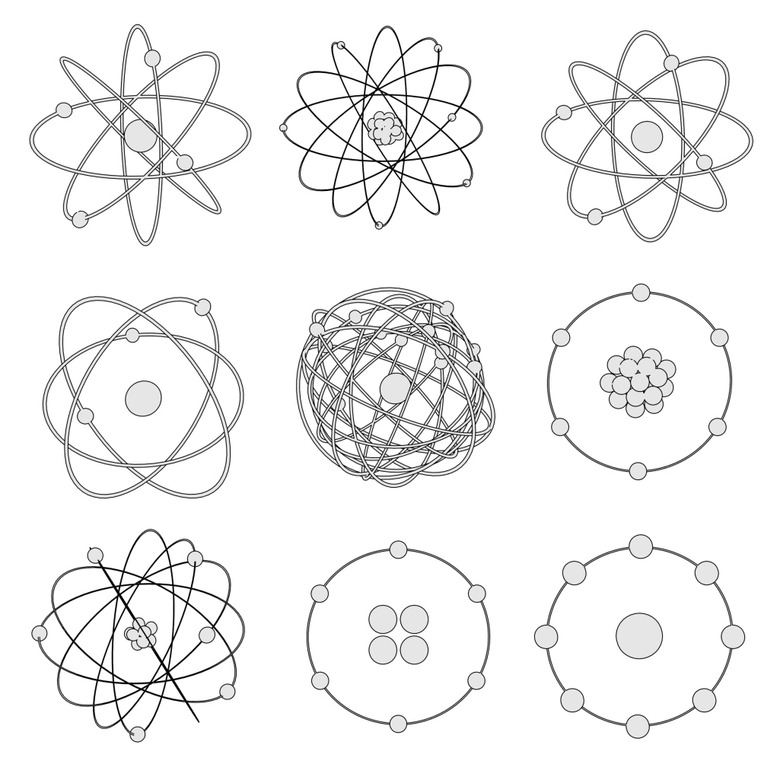How To Calculate Hybridization
Electrons revolve around their atoms in orbits. In valence bond theory, atomic orbitals of one atom can overlap with the orbitals of other atoms to form a molecule, creating brand new, hybrid orbitals. This phenomenon is known as hybridization. Determining the hybridization of a molecule can help identify its shape and structure. For example, many molecules settle in a shape that minimizes the amount of repulsion between atoms and electrons, creating a shape that requires as little energy as possible to maintain. Knowing the types of shapes a molecule will take when hybridized helps researchers better understand how that molecule may interact with others. Hybridization affects the types of bonds that a molecule can make.
Calculating Hybridizations
Step 1
Determine the types of bonds in the molecule by first drawing the chemical structure of the molecule. In particular, note the number of single, double and triple bonds each atom is making. For example, a molecule of carbon dioxide has two double bonds. The molecule can be represented as O=C=O, where each oxygen atom creates a double bond with the central carbon.
Hybridization is defined in terms of sp orbitals. The 's' and 'p' are a way to denote the shape of the orbital paths the electrons travel. For s orbitals, the path is roughly circular. For p orbitals, the shape of the path is more like a dumbbell, with the electron existing primarily in one of two regions rather than in a circular orbit.
Step 2
Determine each atom's hybridization using the types of bonds present. The presence of no double bonds indicates a hybridization of sp3. An atom with a single double bond has a hybridization of sp2. An atom with two or more double bonds, or with a single triple bond, has a hybridization of sp.
The carbon atom in CO2 has two double bonds, one with each atom of oxygen. Therefore, the carbon's hybridization is sp.
Step 3
Determine the hybridization for the other atoms in the molecule. Each oxygen atom in CO2 has a single double bond with the carbon. The hybridization of each oxygen is therefore sp2.
Step 4
Find the overall hybridization of the molecule by determining that of the central atom. In the case of CO2, carbon is the central atom. Because carbon has a hybridization of sp, then the overall hybridization of the molecule is sp.
Cite This Article
MLA
Michelle, Meg. "How To Calculate Hybridization" sciencing.com, https://www.sciencing.com/calculate-hybridization-5332437/. 24 April 2017.
APA
Michelle, Meg. (2017, April 24). How To Calculate Hybridization. sciencing.com. Retrieved from https://www.sciencing.com/calculate-hybridization-5332437/
Chicago
Michelle, Meg. How To Calculate Hybridization last modified March 24, 2022. https://www.sciencing.com/calculate-hybridization-5332437/
